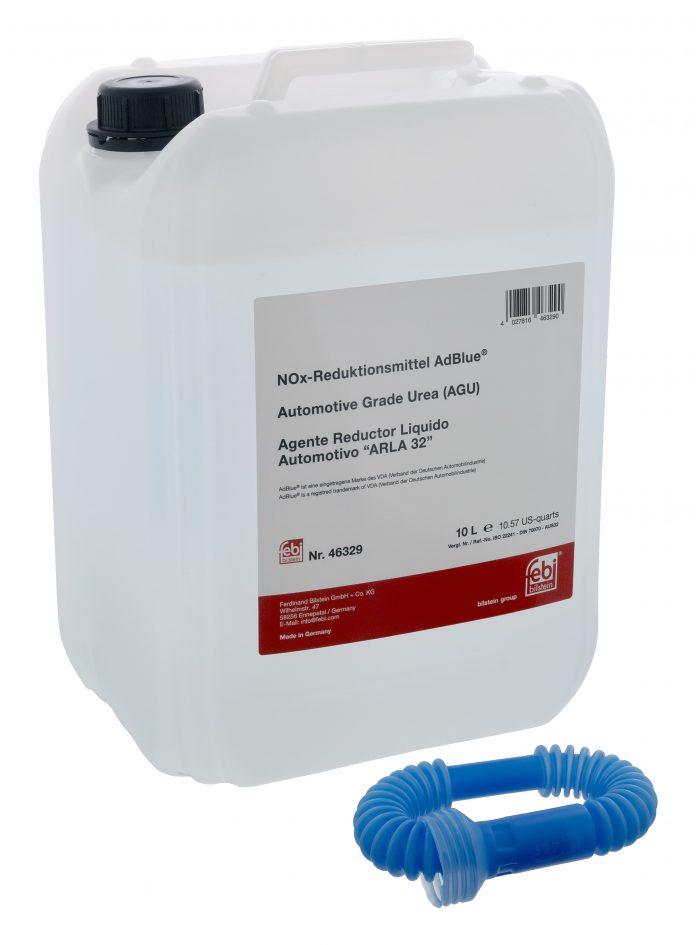The Euro 6 emission standards introduced in September 2014 require that oxides of nitrogen (NOx) emissions be cut by more than 50% when compared to previous levels. This is intended to decrease the pollutants released by diesel exhaust gases and to diminish their environmental impact. As a result, a growing number of vehicle manufacturers are choosing Selective Catalyst Reduction (SCR) exhaust after-treatment that uses AdBlue®.
What is AdBlue®?
AdBlue® is the commercial name for this aqueous urea solution. It is stored in a tank situated in the vehicle and varies in size ranging from 8 – 24 litres. The fluid is dosed into the hot exhaust gases using a pump and an injector situated just before the SCR. The fluid enters the exhaust stream and a reaction occurs by means of thermolysis and hydrolysis in the SCR. The nitrogen oxides are then converted into harmless nitrogen and water.
A mid-size diesel car’s consumption of this fluid lasts for approximately 10,000 to 20,000 kilometres between fill ups. This makes this more of a consumable item than a service item. The need to top up AdBlue® levels may be quite frequent for high mileage drivers and subject to driving conditions.

Useful Information
The vehicle has a low fluid level warning system fitted; this is intended to tell the driver that they need to top up their AdBlue® tank. Failure to adhere to the multiple visual and audible warnings can result in the vehicle being unable to start after it has run out. The car will not start until the fluid tank is refilled and may need resetting with diagnostic equipment.
Euro 5 and Euro 6 exhaust gas legislation requires that the vehicle is prevented from being restarted if an additional reaction agent is used for exhaust gas after-treatment, if there is a risk of the urea solution running out, or when certain system errors occur.
It is recommended that drivers should pay attention to their vehicle’s AdBlue® level and immediately fill up once a dashboard warning appears.




